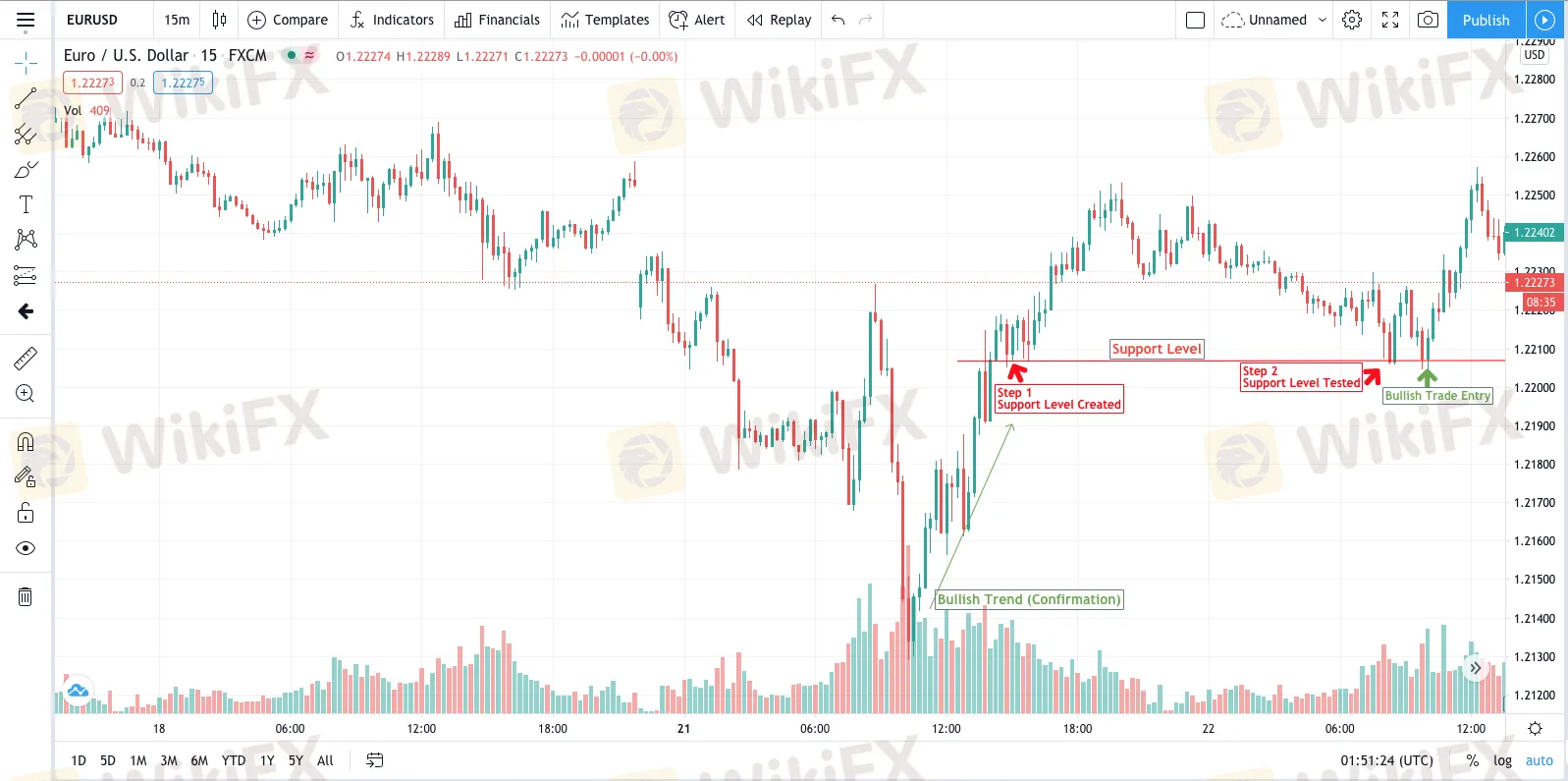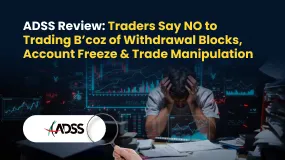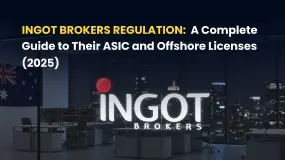简体中文
繁體中文
English
Pусский
日本語
ภาษาไทย
Tiếng Việt
Bahasa Indonesia
Español
हिन्दी
Filippiiniläinen
Français
Deutsch
Português
Türkçe
한국어
العربية
Building a Forex Trading Plan
Abstract:In forex, there are six trading styles that vary from short, medium or long-term.

Traders gravitate towards the foreign exchange markets for good reason. No other financial market in existence possesses the level of volume or liquidity as the forex market. Every caliber and style of trader is supported, and the prospects of generating returns seem far more tangible. Today, we will break down how to build a reliable forex trading plan, which forex strategies and trading styles are best for you, and the critical steps to becoming a part-time trader.
Trading Types
In forex, six trading styles vary as short, medium or long-term. The experience you gain will teach you which style is best suited to your trading methodology, but for starters, here are the primary forex trading types:
Day Trader - Day traders bridge the gap between scalping (short-term) to swing trading (medium-term) and trade during intraday time frames. Generally, positions are not overnight, while day traders need to be well-versed in fundamental, technical and correlational analysis. Day traders trade positions are as short as one minute to as long as end-of-day. The Relative Strength Index (RSI) is a critical tool in a day traders arsenal as it helps reveal when markets are overbought or oversold.
Swing Trader - Swing traders are medium-term traders, with trade positions lasting between one day to a couple of weeks. Successful swing traders can identify market trends and trade market swings while consciously being aware of trade news alerts centered around high volatility . Attention to detail is a core attribute of swing traders.
Position Trader - Position traders execute forex trades that range between several weeks to a handful of years. The primary goal of a position trader is to generate substantial returns by trading more long-term positions. Both fundamental and technical analysis knowledge is critical, while many position traders base their trade positions on short-term trends within broader market ranges.
Event-Driven Trader - Fundamental analysis is the wheel-house of an event-driven trader. Event-driven traders aim to make gains from volatility spikes from public news events (such as the GDP, Non-Farm Payroll, political elections and unemployment data). A successful event-driven trader is continuously up-to-date with world events and can accurately predict how local and global events may impact a market.
Algorithmic Trader - Algorithmic traders bridge the gap between computer science and trading. Algorithmic trading is associated with high-frequency trading, an algorithmic-powered trading algorithm that can autonomously invest a myriad of trade commands, strategies, market exemptions and trade execution within milliseconds. Algorithmic traders either program their software or outsource to experience programmers and chartists to procure algorithmic-based trading programs.
Scalping Trader - There are numerable factors that go into being a scalper. Scalpers are among the fastest of short-term traders, with trade positions lasting between a few seconds to a few minutes. Due to the forex markets high liquidity, scalper traders have inherent advantages during colliding market hours. The core objective of scalping is to make numerous small gains throughout the day. Scalping is not for inexperienced or uneducated traders and requires a firm grasp of forex knowledge and the ability to thrive under pressure.
Forex Trading Strategies (Top 3)
Price Action Support & Resistance
Price action is a forex traders bread and butter. Applicable for short-term, medium-term and long-term strategies, price action is effective alone, but sometimes it is more robust when equipped with no-lagging indicators.
Depending upon market conditions, there are multiple variations of price action trading strategies that exist. We will go over the rudimentary steps involved in both a buy and sell price action trade involving support and resistance levels.
As seen below, support and resistance levels occur when horizontal price levels connect price highs or lows to lows. Support and resistance levels are market reversals that leave swing points in price action. In most short-term cases, the price stays contained within support and resistance levels.
Price Action Buy Trade
To prime this trading strategy, a second resistance level needs identifying. Support levels do not have to be the same price levels but are within a few pips for day traders. Once the price breaks the support level, traders place forex buy trade with 1% to 3% capital. To reduce risk, traders may use an associated stop at a specific price, pip variable or price/loss value.
Price Action Sell Trade

Like support levels, resistance levels can be created around comparable price levels distinguished from candle bodies (the best form of resistance candlesticks) or by wicks (volatile and drastic price changes, not as influential). Generally, this trading strategy is most potent when formed out of a bullish trend with full-body candlestick resistance levels.
Our first strong resistance level was created by matching resistance price levels. The next step includes a bearish market reversal, as seen, followed by another test in the same resistance level previously established. Our sell trade is nearly ready; we just need another trade confirmation. Additionally, we receive the sell trade confirmation with the pin bar candlestick formation.
These price action trading examples can use multiple time frames, but the best time frame would be 15 to 30 minutes.
Forex Trend Trading
Forex trend trading is a trading methodology centered around yielding market gains by placing trades that exploit a markets price momentum. Generally, trend traders use a medium to long-term time frame, while this strategy applies to traders of all experience levels.
To better understand market conditions, traders use technical analysis indicators like the Commodity Channel Index (CCI), Relative Strength Index (RSI) and Moving Averages (MA). As a trend trader, the stronger the bullish (upward) or bearish (downward) trend, the better.

Commonly, successful trend traders exploit market zones of highs and lows (price levels) in both strong bullish and bearish trends.
Using the Commodity Channel Index, trend traders can confirm whether the price is rallying or plummeting in agreement with the market trend. Should the CCI dip below level -125, this signifies that the price is responding with a rally.
To strengthen this trading approach, combine the trend trading methodology with the price action support and resistance trading to take advantage of trend trades, reversal trades and market swings.
Creating a Forex Trading Plan
Setting risk and trade parameters and following without compromise is a challenging feat for novice day traders. Be clear and concise regarding your time commitment, define and visualize your trading goals and use appropriate risk-reward trade volumes to mitigate risk. From there, you can employ the following steps to craft a forex trading approach:
1. Money Management - Register an account with a regulated forex brokerage, as non-regulated trading platforms are susceptible to privacy and financial fraud. Verify that the broker offers a free demo account to learn the trading platform risk-free and make your initial investment into your trading account. When trading, trade no more than 3% of your account balance per trade and no more than 5% at once.
2. Trade Experimentation - Time availability and commitment will dictate which type of trader you will become. Short, medium or long-term, and your trading approach (day trader, scalper, algorithmic, event-based, algorithmic, etc.) is best discovered when practicing trades on a demo account.
3. Create Trading Rules - Abiding by a strict set of trading parameters helps ensure long-term market participation and significantly mitigates risk. A few trade rules to consider would be:
Discontinuing trading after two consecutive losses.
Utilizing stop and limit orders to mitigate risk on medium to long-term positions.
Never chasing losing trades with larger trade positions to offset losses.
Becoming a Forex Trader
4. Treat Trading Professionally - The foreign exchange market renders worldwide market access and does not require an economic degree to leverage market volatility gains. As there is no entry barrier (apart from governmental and age restrictions), many novice traders mistake forex trading as a hobby instead of a business. This is a fatal trading mistake. Like businesses, traders need a strategy, commitment and discipline to succeed.
5. Receive Professional Support - Many traders fail to understand the level of commitment needed to become a successful forex trader. In such cases, it may be more advantageous for those traders to research and commit with reputable forex service providers (trader copiers, signal services and trade management services). Here is a list of the Top Forex Service Providers of 2021.
There is no Holy Grail to forex trading or some magic trading formula to catapult one to the ranks of a forex millionaire, just consistency, resourcefulness and a strategy. Do not rush the process of familiarizing yourself with various trading approaches, and make sure to follow your trade rules to curb risk exposure. Visualize reaching your short and long-term trading goals, and keep your trading lens scoped on long-term market participation rather than short-term riches. Learn how to Master Forex Trading Psychology to become an elite forex trader.
Disclaimer:
The views in this article only represent the author's personal views, and do not constitute investment advice on this platform. This platform does not guarantee the accuracy, completeness and timeliness of the information in the article, and will not be liable for any loss caused by the use of or reliance on the information in the article.
Read more

Grand Capital Doesn’t Feel GRAND for Traders with Withdrawal Denials & Long Processing Times
The trading environment does not seem that rosy for traders at Grand Capital, a Seychelles-based forex broker. Traders’ requests for withdrawals are alleged to be in the review process for months, making them frustrated and helpless. Despite meeting the guidelines, traders find it hard to withdraw funds, as suggested by their complaints online. What’s also troubling traders are long processing times concerning Grand Capital withdrawals. In this Grand Capital review segment, we have shared some complaints for you to look at. Read on!

EmiraX Markets Withdrawal Issues Exposed
EmiraX Markets Review reveals unregulated status, fake license claims, and withdrawal issues. Stay safe and avoid this broker.

ADSS Review: Traders Say NO to Trading B’coz of Withdrawal Blocks, Account Freeze & Trade Issues
Does ADSS give you plenty of excuses to deny you access to withdrawals? Is your withdrawal request pending for months or years? Do you witness account freezes from the United Arab Emirates-based forex broker? Do you struggle to open and close your forex positions on the ADSS app? Does the customer support service fail to respond to your trading queries? All these issues have become a rage online. In this ADSS Broker review article, we have highlighted actual trader wordings on these issues. Keep reading!

INGOT Brokers Regulation 2025: ASIC vs Offshore License - What Traders Must Know
Explore INGOT Brokers regulation in 2025: Compare their ASIC and Seychelles FSA licenses, understand trader protection levels, and learn about potential risks in this detailed guide.
WikiFX Broker
Latest News
Consob Targets Political Deepfake “Clone Sites” and Unlicensed Platforms in Latest Enforcement Round
WikiEXPO Global Expert Interviews: Gustavo Antonio Montero: ESG in Finance
2 Malaysians Arrested in $1 Million Gold Scam Impersonating Singapore Officials
Is FXPesa Regulated? Real User Reviews & Regulation Check
Fraud Mastermind Zhimin Qian Sentenced to 11 Years for $6.6 Billion Bitcoin Ponzi Scheme
Almahfaza Broker – 2025 Review: Safe or Scam?
Uniglobe Markets Review 2025: A Complete Guide to an Unregulated Broker
INZO Broker No Deposit Bonus: A 2025 Deep Dive into Its Offers and Risks
Exness Broker Expands in South Africa with Cape Town Hub
Global Guide to Finding Forex IBs/Brokers — Share Your Pick and Win Big!
Currency Calculator



